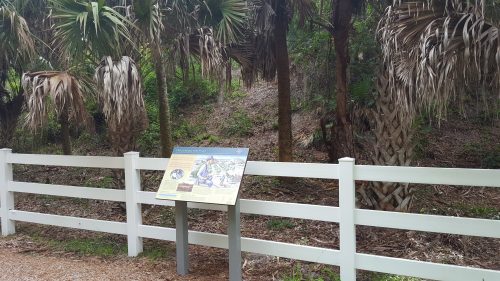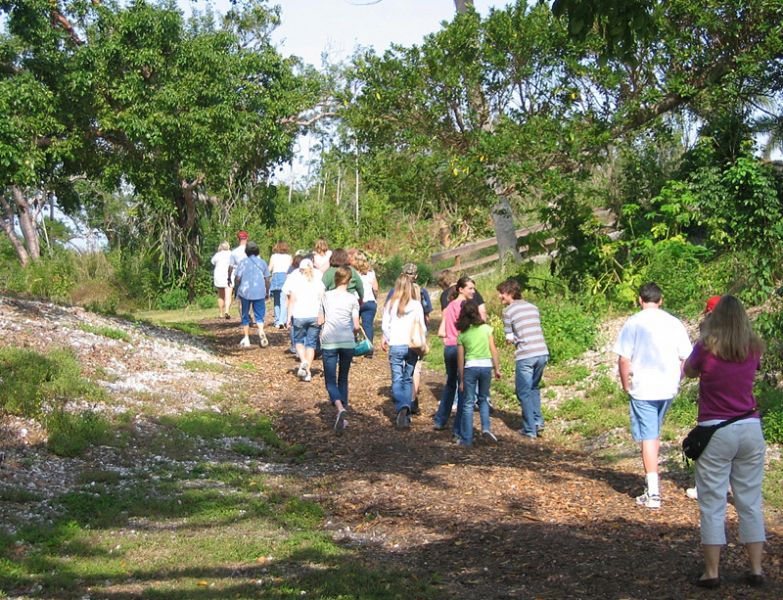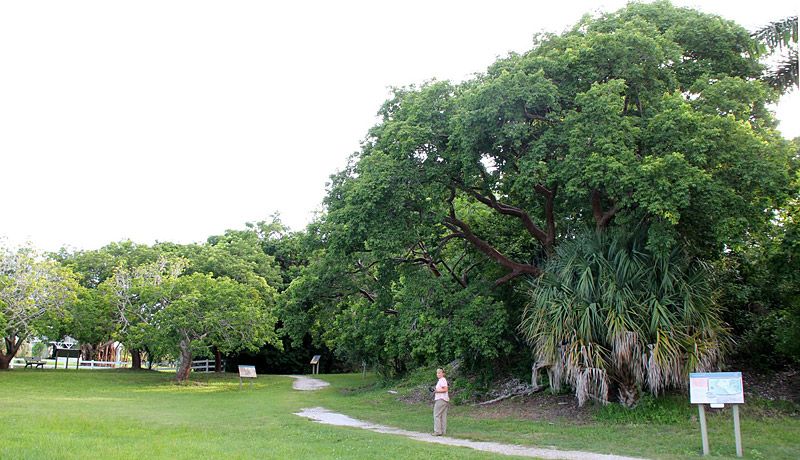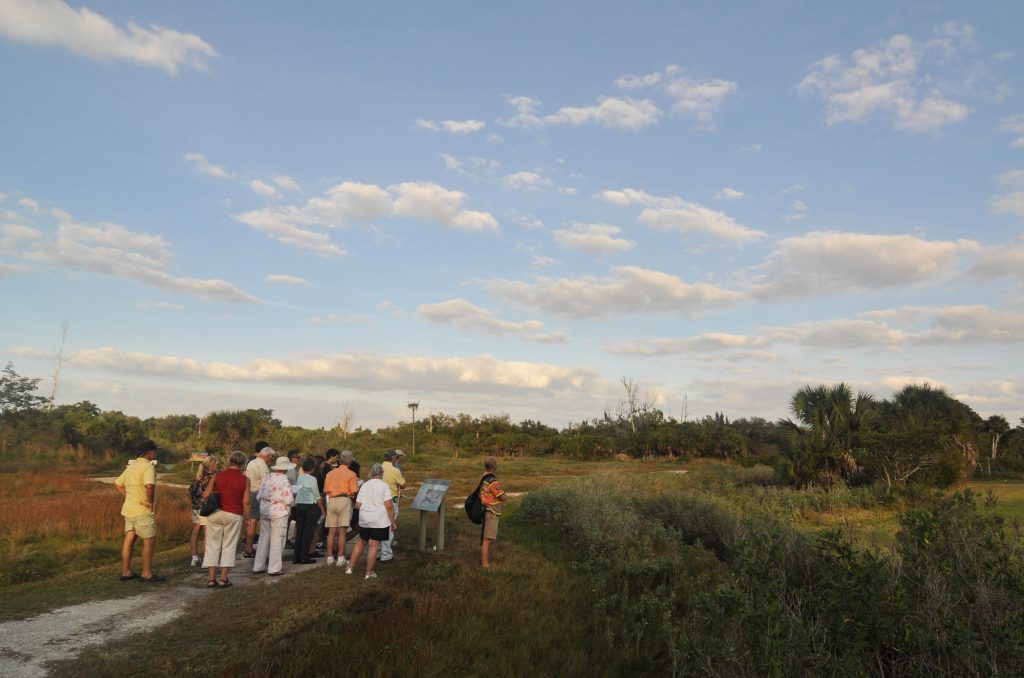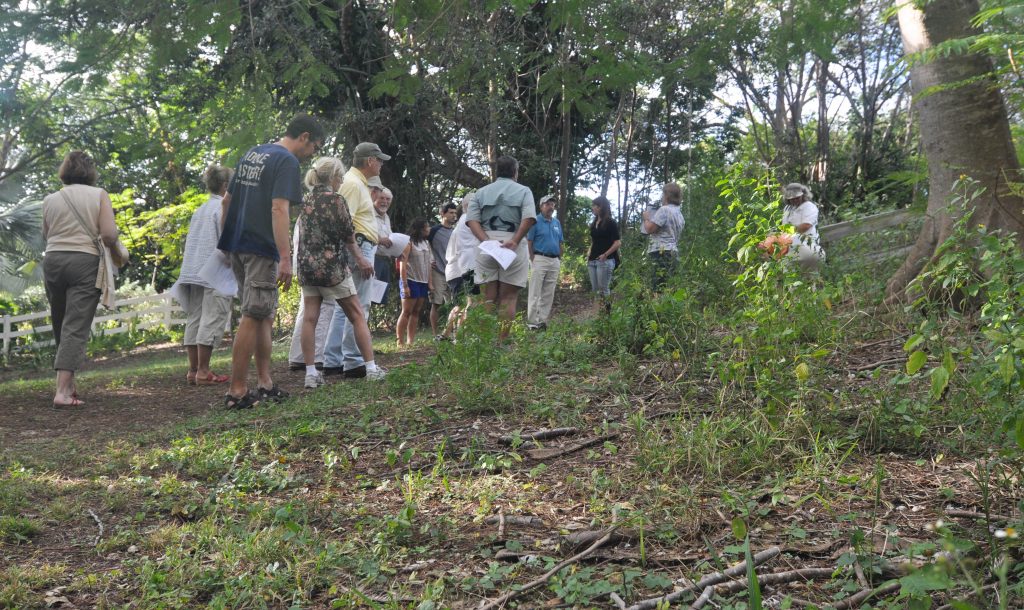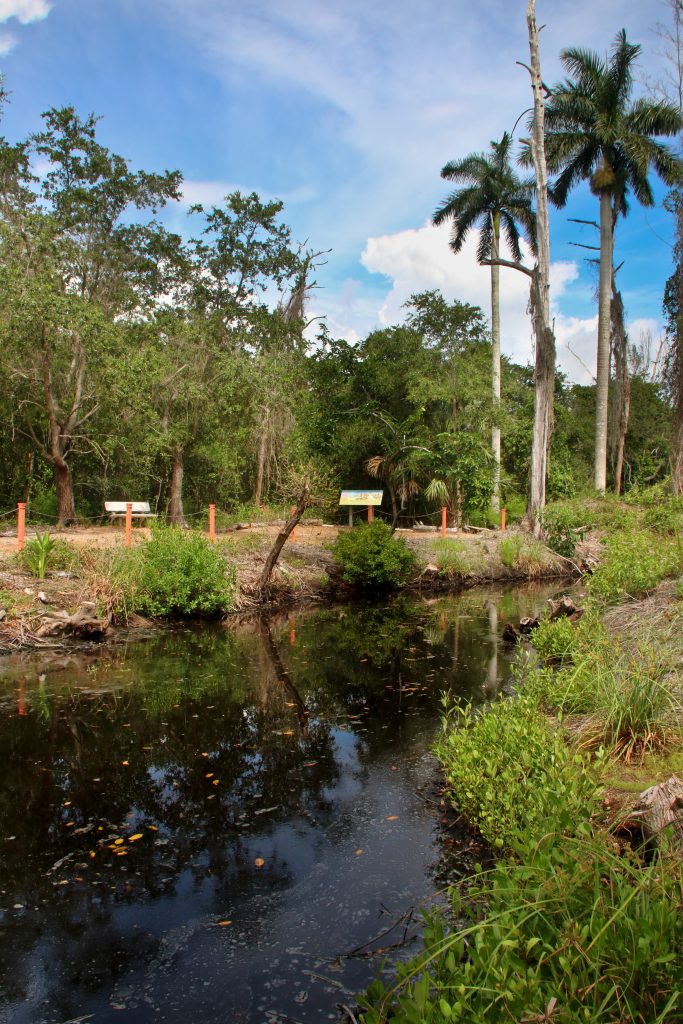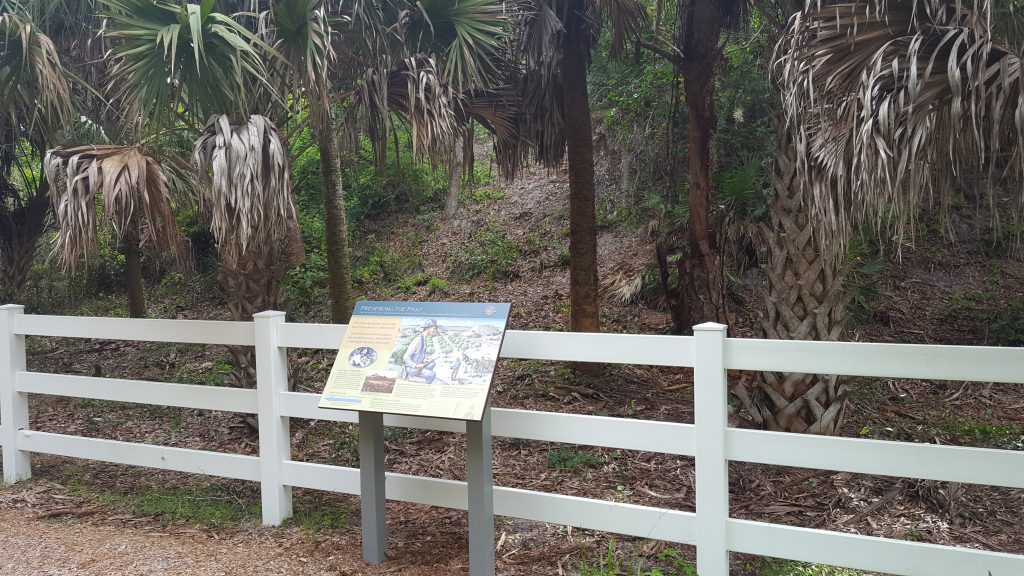The Calusa Heritage Trail is the publicly accessible walking trail at the Randell Research Center. Currently, the north-facing platform on Brown’s Mound, the Randell Mound stairway, and the walkway to Smith Mound are open! While the footbridge is still in disrepair, we have opened our interior service road to allow the public to access the site on foot. The trail is open daily for self-guided visits from sunrise to sunset.
Museum-quality interpretive signs along the trail provide visitors with detailed information regarding the Calusa people who inhabited the Pineland site, their culture and environment, and the history of southwest Florida after the Calusa left. The trail also features an observation platform atop the site’s tallest shell mound, in addition to trail-side benches and a boardwalk and bridge over low-lying areas.
Parking is available inside the main gate to the Randell Research Center at 13810 Waterfront Drive. Public restrooms and picnic facilities are also provided. Dogs are permitted provided they are on leash at all times, well behaved, and all waste is bagged and disposed of properly.
The Calusa Heritage Trail was sponsored by Dwight and Susan Sipprelle and funded in part by a Special Category Grant from the Florida Department of State, Office of Cultural and Historical Programs, Division of Historical Resources, and through in-kind services and the efforts of many volunteers.
CLICK HERE FOR A MAP OF THE TRAIL.
What to Wear / What to Bring
Because the Calusa Heritage Trail is entirety outdoors, visitors should dress accordingly. Much of the site is open to sun exposure. Summer conditions include heat, humidity, and frequent afternoon thunderstorms. Mosquitoes and gnats can be bothersome during the summer wet season. Winter morning temperatures occasionally drop into the 40s or 30s, combined with the effects of wind chill. The following suggestions for items to bring will make your visit more comfortable:
- Hat
- Sturdy shoes
- Sunglasses
- Sunscreen
- Insect repellent
- Water
Guided Tours
Please call 239-283-2157.
Requested donations for visitors to the Calusa Heritage Trail are $7 for adults, $5 for seniors, and $4 for children. Members of the Friends of the RRC and dogs on leash are admitted free. Income from donations and memberships makes it possible to maintain this important archaeological site.
